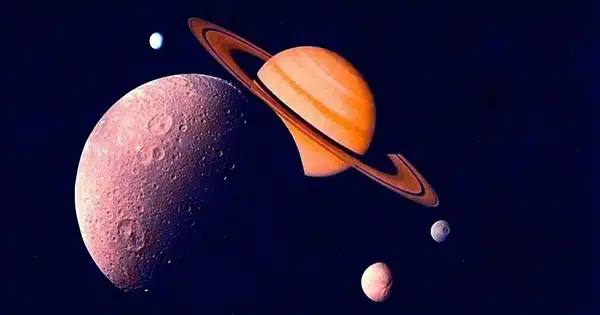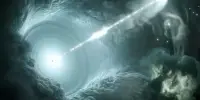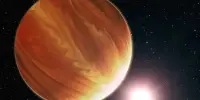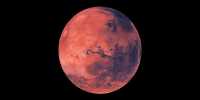According to a study conducted by Western astrobiologist Catherine Neish, the deep ocean of Titan, Saturn’s largest moon, is most certainly uninhabitable, implying that all possibility of discovering life in the frozen world is lost.
This revelation makes it significantly less probable that space scientists and astronauts will ever discover life in the outer solar system, which contains the four ‘giant’ planets Jupiter, Saturn, Uranus, and Neptune.
“Unfortunately, we will now need to be a little less optimistic when searching for extraterrestrial lifeforms within our solar system,” said Neish, an Earth sciences professor. “The scientific community has been very excited about finding life in the icy worlds of the outer solar system, and this finding suggests that it may be less likely than we previously assumed.”
The search for life in the outer solar system is a major focus for planetary scientists, astronomers, and government space agencies such as NASA because many frozen moons of massive planets are anticipated to have enormous underlying oceans of liquid water.
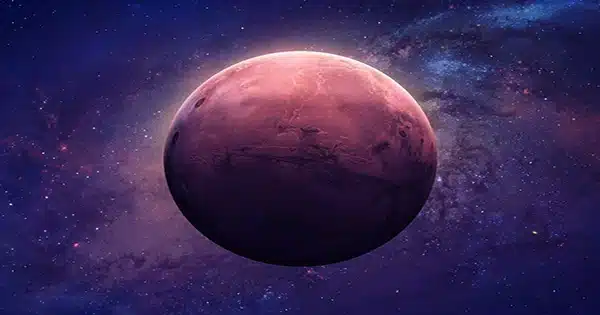
Titan, for example, is estimated to have an ocean beneath its frozen surface that is more than 12 times larger than Earth’s oceans.
“Life as we know it here on Earth needs water as a solvent, so planets and moons with lots of water are of interest when looking for extraterrestrial life,” said Neish, a member of Western’s Institute for Earth and Space Exploration.
In their work, published in the journal Astrobiology, Neish and her colleagues attempted to quantify the number of organic molecules that may be transmitted from Titan’s organic-rich surface to its deep ocean using data from impact craters.
Throughout Titan’s history, comets have melted the frozen moon’s surface, forming pools of liquid water that have combined with surface organics. The ensuing melt is denser than Titan’s icy crust, so heavier water sinks through the ice, maybe to the planet’s subterranean ocean.
Using the estimated rates of impact on Titan’s surface, Neish and her colleagues calculated how many comets of varying sizes would strike Titan each year throughout its existence. This enabled the researchers to forecast the flow rate of water transporting organics from Titan’s surface to its interior.
Neish and his team discovered that the weight of organics transmitted in this manner is quite tiny, with no more than 7,500 kg/year of glycine—the simplest amino acid that makes up proteins in life. This is almost the same mass as a male African elephant. (All biomolecules, including glycine, include carbon—an element—as the backbone of their molecular structure.
“One elephant per year of glycine into an ocean 12 times the volume of Earth’s oceans is not sufficient to sustain life,” Neish went on to say. “In the past, people often assumed that water equals life, but they neglected the fact that life needs other elements, in particular carbon.”
Other cold worlds (such as Jupiter’s moons Europa and Ganymede, and Saturn’s moon Enceladus) have essentially no carbon on their surfaces, and it is uncertain how much could be obtained from their interiors. Titan is the solar system’s most organic-rich frozen moon, therefore if its subsurface ocean is uninhabitable, it raises concerns about the habitability of other known cold worlds.
“This work shows that it is very hard to transfer the carbon on Titan’s surface to its subsurface ocean—basically, it’s hard to have both the water and carbon needed for life in the same place,” Neish said.
Flight of the Dragonfly.
Despite the findings, there is still much to learn about Titan, and Neish’s main question is what it is made of.
Neish is a co-investigator on the NASA Dragonfly project, a 2028 spacecraft mission that will send a robotic rotorcraft (drone) to Titan’s surface to research its prebiotic chemistry, or how organic compounds originated and self-organized to give rise to life on Earth and elsewhere.
“It is nearly impossible to determine the composition of Titan’s organic-rich surface by viewing it with a telescope through its organic-rich atmosphere,” Neish stated. “We need to land there and sample the surface to determine its composition.”
To present, only the Cassini-Huygens multinational space project in 2005 has successfully landed a robotic probe on Titan to collect materials. It is still the first spacecraft to land on Titan, as well as the farthest touchdown from Earth by any spacecraft.
“Even if the subsurface ocean isn’t habitable, we can learn a lot about prebiotic chemistry on Titan, and Earth, by studying the reactions on Titan’s surface,” Neish said. “We’d like to know if interesting reactions are occurring there, especially where the organic molecules mix with liquid water generated in impacts.”
When Neish began her current study, she was concerned that it would have a detrimental impact on the Dragonfly objective, but it has raised new issues.
“If all of the melt caused by impacts sinks under the ice crust, we won’t have samples near the surface where water and organics mix. These are areas where Dragonfly may look for the byproducts of those prebiotic events, educating us about how life might emerge on various planets,” Neish explained.
“The results from this study are even more pessimistic than I realized with regards to the habitability of Titan’s surface ocean, but it also means that more interesting prebiotic environments exist near Titan’s surface, where we can sample them with the instruments on Dragonfly.”
